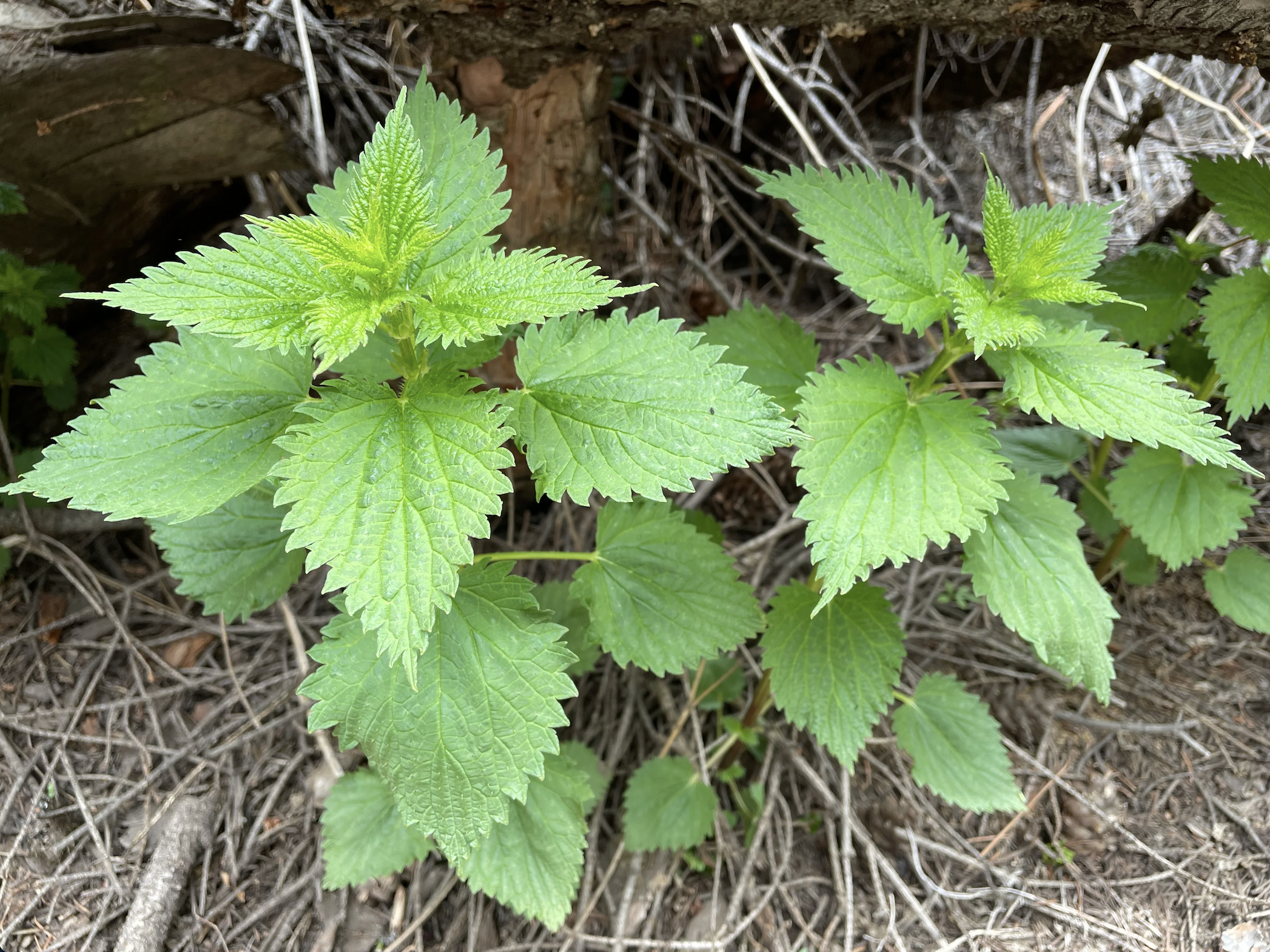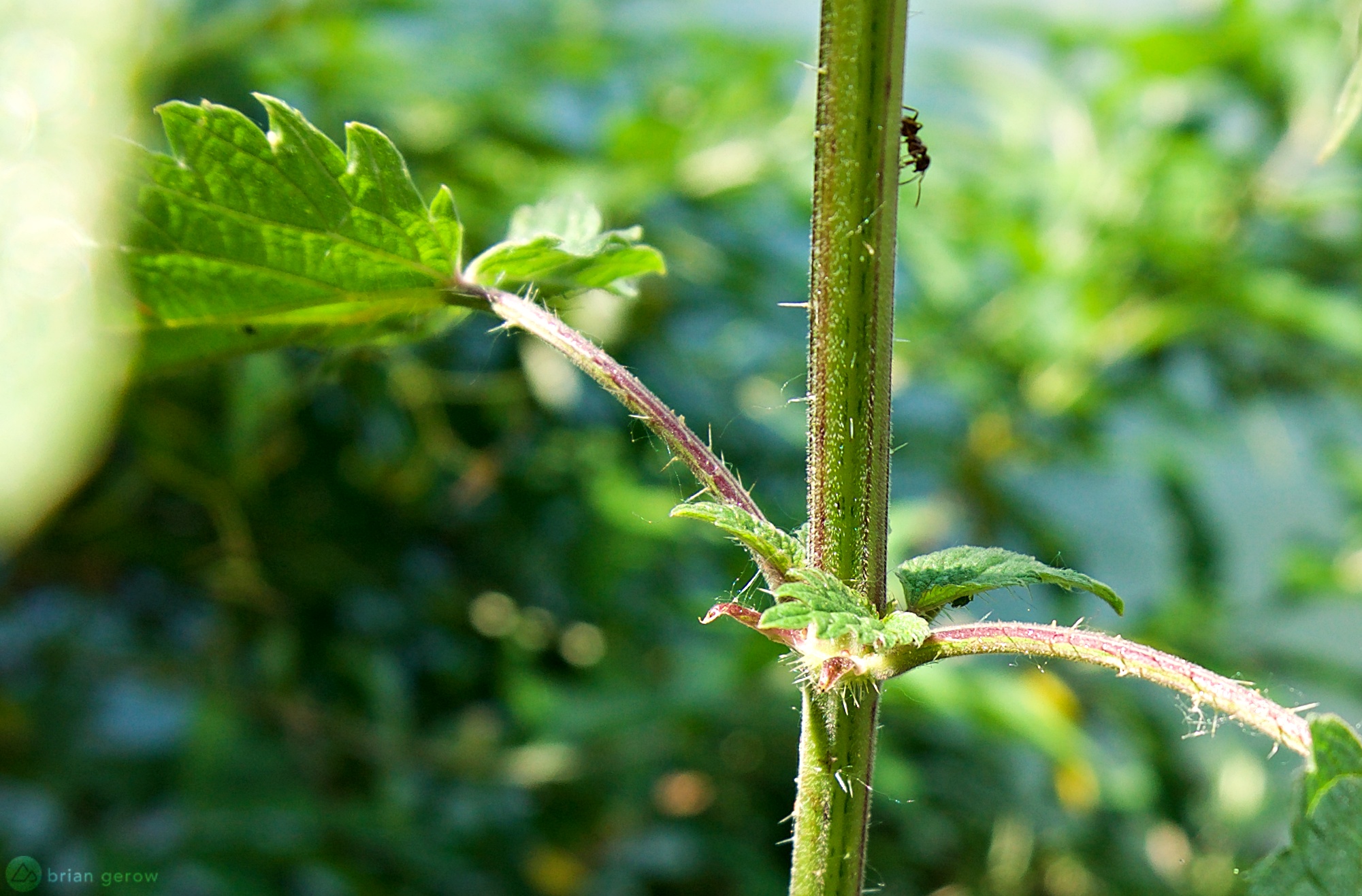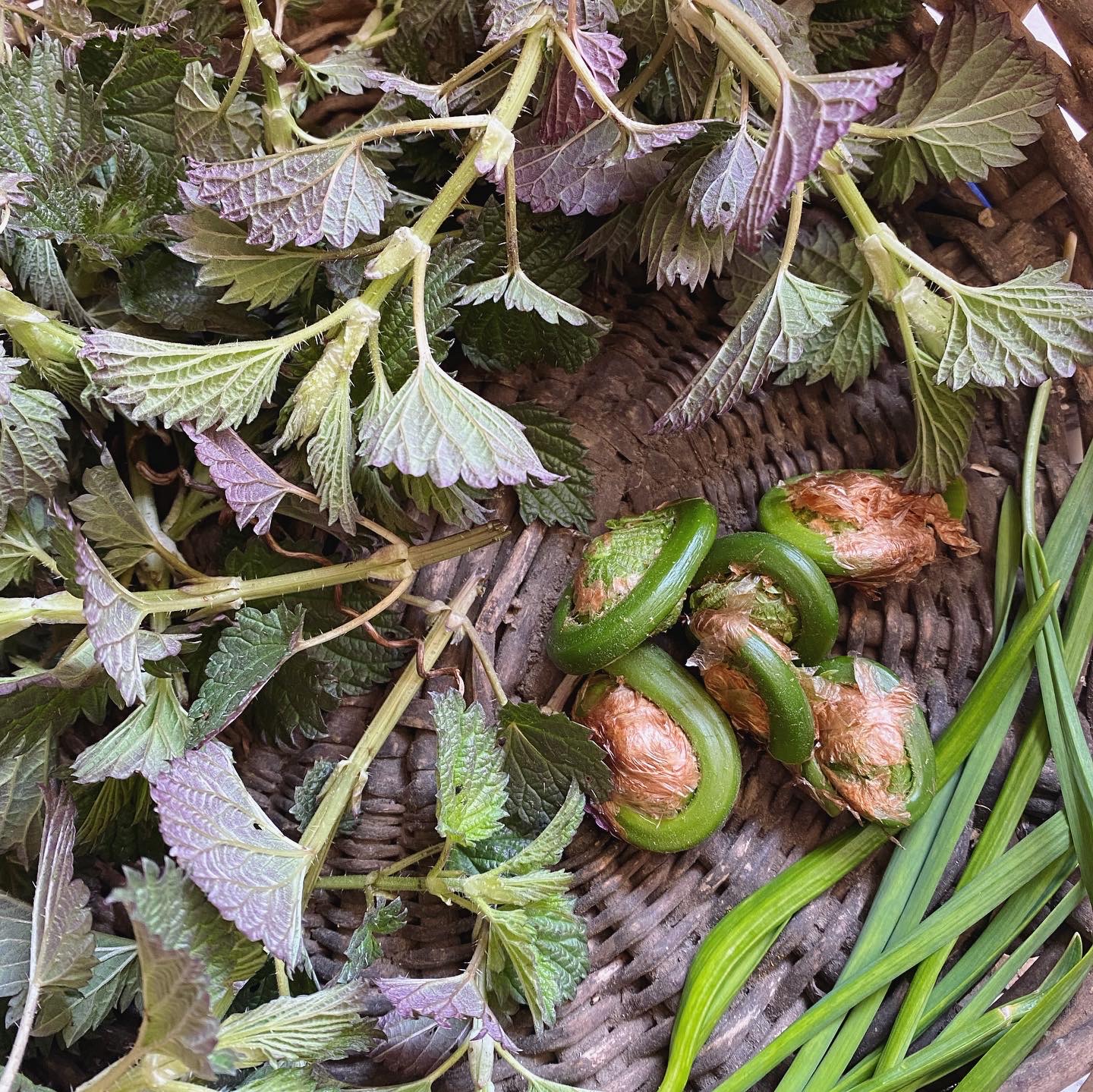Herbalist David Hoffman once famously said, “when in doubt, use nettle.” Although that comment was tongue-in-cheek, there’s a lot of truth to it! Full of minerals, stinging nettle (urtica dioica) is one of the most nutritient-dense foods you can eat. They grow widely around the world and are often one of the first greens to emerge in spring.

How to identify stinging nettle
Stinging nettle (urtica dioica) grows plentifully and has few lookalikes. Here are a few things to look for to identify nettle:
- leaves with toothed edges and tapered tips
- leaves that grow opposite each other, rather than alternating
- rough, veined leaf surface and ridged stems
- tiny “hairs” or needles visible all over the stems (careful not to touch them — this is the part of the plant that stings!)
Nettle plants can get as tall as 6-8 feet by the end of the season! If the plant is flowering, you’ll also see little clusters of flowers hanging from each leaf node, usually a light green in color. As always, practice safety and responsibility while foraging. Make sure you have a definitive ID before sampling anything you’ve gathered from the wild. Always practice honorable harvest practices in order to respect and protect wild plant populations.

How to cook with nettles — the basics
The tender young nettle shoots are delicious, similar in flavor and texture to spinach. At this stage, I like to pick them whole (with gardening gloves on), swish them around in a bowl of water with tongs to clean them, then blanch them in boiling water for a minute or two until tender. Drain and mix in a little butter and salt. Delicious! (Don’t discard the cooking water either! It makes a fresh-tasting and super nutritious tea. You also could mix in other seasonings to create a broth for another dish.)
Once the nettles grow more than around 8″ tall, the stems get too tough and fibrous to eat them whole. (On that note, nettle stems make incredible cordage and have been used historically to make textiles, similar to weaving linen from flax.) Instead, I strip the leaves into a bowl (with gardening gloves on — compost the stems), then clean, drain and prepare them the same way I’d prepare whole young shoots. In this way, nettles make for a great wild food source for much of the summer. Once they go to flower, you don’t want to eat the leaves anymore, as they can irritate the kidneys (and they’re much tougher and less palatable anyway). At this mature stage, the nettle seeds are also a forageable item, although I haven’t personally worked with them yet.

How to pick nettles without being stung
The sting can understandably be intimidating if you’ve never worked with nettle before. However, it’s really quite easy to manage with a pair of gardening gloves! I use gloves to gather a basketful, and handle them with metal tongs while cleaning. Cooking or drying them completely removes the sting — a quick 60-second blanch in boiling water is all you need. (Or, take some inspiration from the brave – or foolhardy – Brits at the World Nettle Eating Championship. Although we personally won’t be trying that at home!)
If you do get stung, there are several wild plants that often grow near nettles and can help neutralize the sting. A few to look for are plantain, yellow dock and jewelweed. If you can positively identify one of these (and are sure the area is safe to forage) grab a nice clean leaf, chew or crush it, then to apply the sting. Voilà!
What are some of your favorite things to do with nettle? I’ll be sharing my favorite nettle soup recipe soon, so stay tuned! 🙂
Ready to plan your dream retreat away from the hustle and bustle? Come experience the many beautiful wild plants and wonderful creatures of Sky Meadow! Check out our retreat packages here and reach out to us to get started. We’d love the opportunity to host you soon!